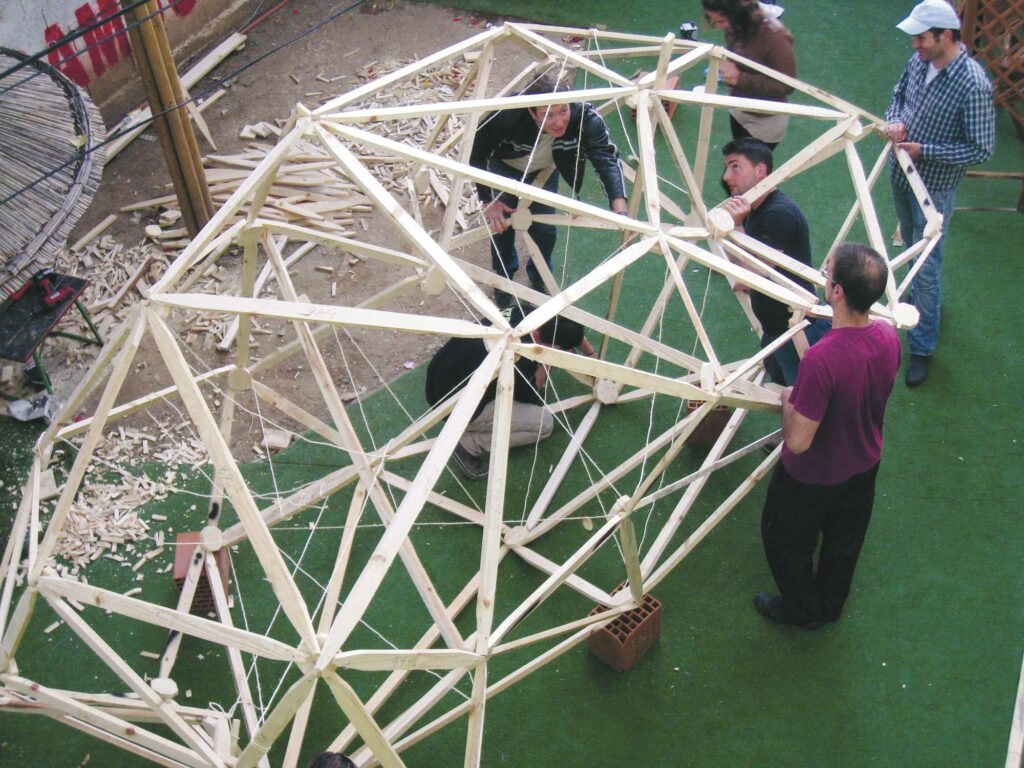While the biggest art work of the time was about to fall down on February 20, 1991 in the main square of Tirana in Albania, hope was the only feeling that was increasing. The statue of Enver Hoxha, the dictator who isolated Albania from the rest of the world for more than four decades, had been toppled by a large group of protesting students. Back then people thought that everything would go well after such a long period of suffering. Although the Albanian people where eager to experience the Western world and contemporary culture, the fifty years of delay were not without its consequences, and left them largely unprepared in the face of the confrontation with Western culture. The fall of the communist regime marked the end of an art system that until then had only functioned as a propaganda tool supporting communist ideology. Considering that for decades Albanian artists were only allowed to produce works illustrating Socialist Realism and that it was only after the nineteen-nineties that artists began to approach modern art—switching from Socialist Realism directly to abstract and conceptual art—half a century too late.
The first noteworthy and important initiatives that were to include Albania on the map of contemporary art occurred in 2000. The Tirana International Contemporary Art Biannual initiated in 2001, marked a new era for Albanian art history. Organized successfully for four editions, the T.I.C.A. B was the leading initiative among other organizations that were flourishing parallel to the culmination of the foreign foundations present in the Balkans since the fall of Yugoslavia. With a focus on capacity building, foundations such as SOROS, the European Cultural Foundation, and Pro Helvetia supported the creation of independent structures even in the field of art. In the late nineties and first decade of the twenty-first century, individuals and artists lived from one project to the next. When Albania formally applied for membership to the European Union, many foreign foundations closed their respective local offices and returned to a more regional policy, which resulted in taking with them, the main financial support for the art sector.
The Albanian contemporary art scene, which was still in the process of redefining itself, was left like a hitchhiker on a countryside road. The only option available was to ask for support from the state institutions.
Unfortunately nepotism politics and conservative institutions would hardly support any contemporary art activity.
Faced with this situation, one after the other, many initiatives disappeared, some independent institutions cut short their programs, and artists and curators left the country. As a result, for the last five years contemporary art in Albania is at a standstill. I left Albania in 2006, the same year I completed my studies at the Academy of Arts in Tirana, and went to study and work in Germany. After curating exhibitions mostly in Germany and Albania as a freelance curator, I felt the necessity to create a structure from which I would not only benefit, but that would also provide a way for future generations of artists to produce and present their work.
At the same time I was approached by many artists of my generation, who clearly stated their needs and suggested the ideas necessary to provide and develop a structure that would fulfill their professional needs and With Stand time. The Tirana Art Lab—Center for Contemporary Art was founded in 2010 with the aim to promote emerging artists from Albania as well as from Central, Eastern, and Southeastem Europe. It also commissions and supports new productions by national and international artists on site. In its present focus on the production of new works; Tirana Art Lab is currently building a laboratory for artistic research and production. Facilities will include film and photography equipment, film development tools, and a digital editing suite; the center also maintains an open library. It is our hope to systematically create the possibility to present new productions, as well as existing ones, from national and international artists, to the Albanian public. The Tirana Art Lab is additionally interested in the collaboration with neighboring countries, and aims to play a key role not only in the national but in the regional context as well. The artist-in-residence and “Meet the Region“ project initiatives allow us the possibility to invite international artists, curators, and researchers to Albania where they have the opportunity to experience and team about the Albanian art scene and produce projects specific to the location. The Tirana Art Lab encompasses a large spectrum of cultural events in the realms of contemporary art, such as exhibitions, workshops, concerts, and art publications. It maintains a small office in the center of Tirana while collaborating with a variety of venues and partners across town— according to the needs of the respective project. As one of the youngest leading institutions in the contemporary art field in Albania, we are facing a great deal of obstacles—mainly financial. Europe has been affected by the current economic crises and art institutions have had to undergo substantial financial cuts; Albanian art institutions have been constantly affected by the economic crises. As a result, for more than two years, the Tirana Art Lab has been operating without any state- sponsored or private support. The center’s existing program was made possible by basic financial support from foreign foundations or embassies and with the goodwill of artists and professional s. It is our hope that better times will come but until then, we will continue fighting for our right to exist, as a space throughout time.
